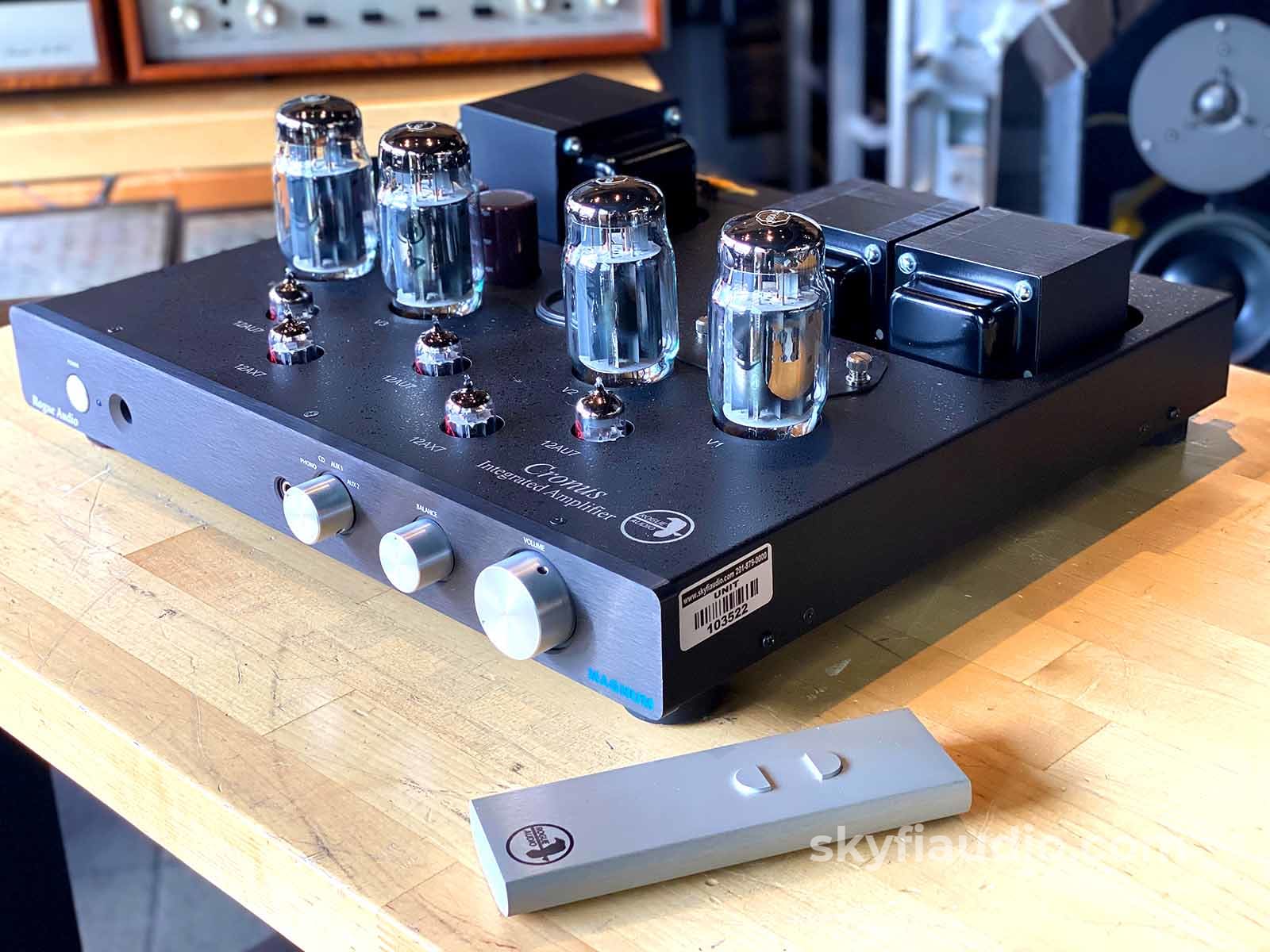
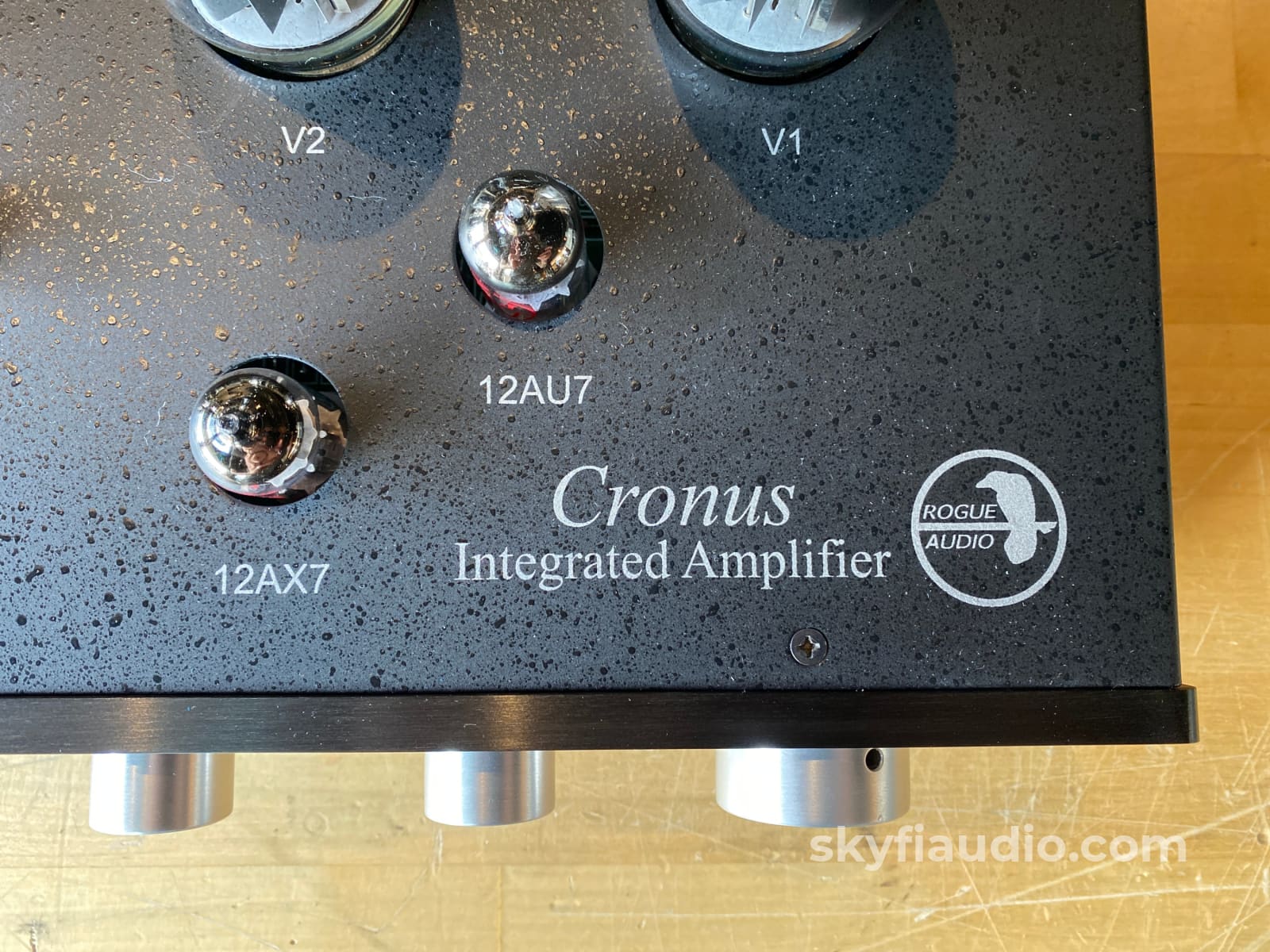
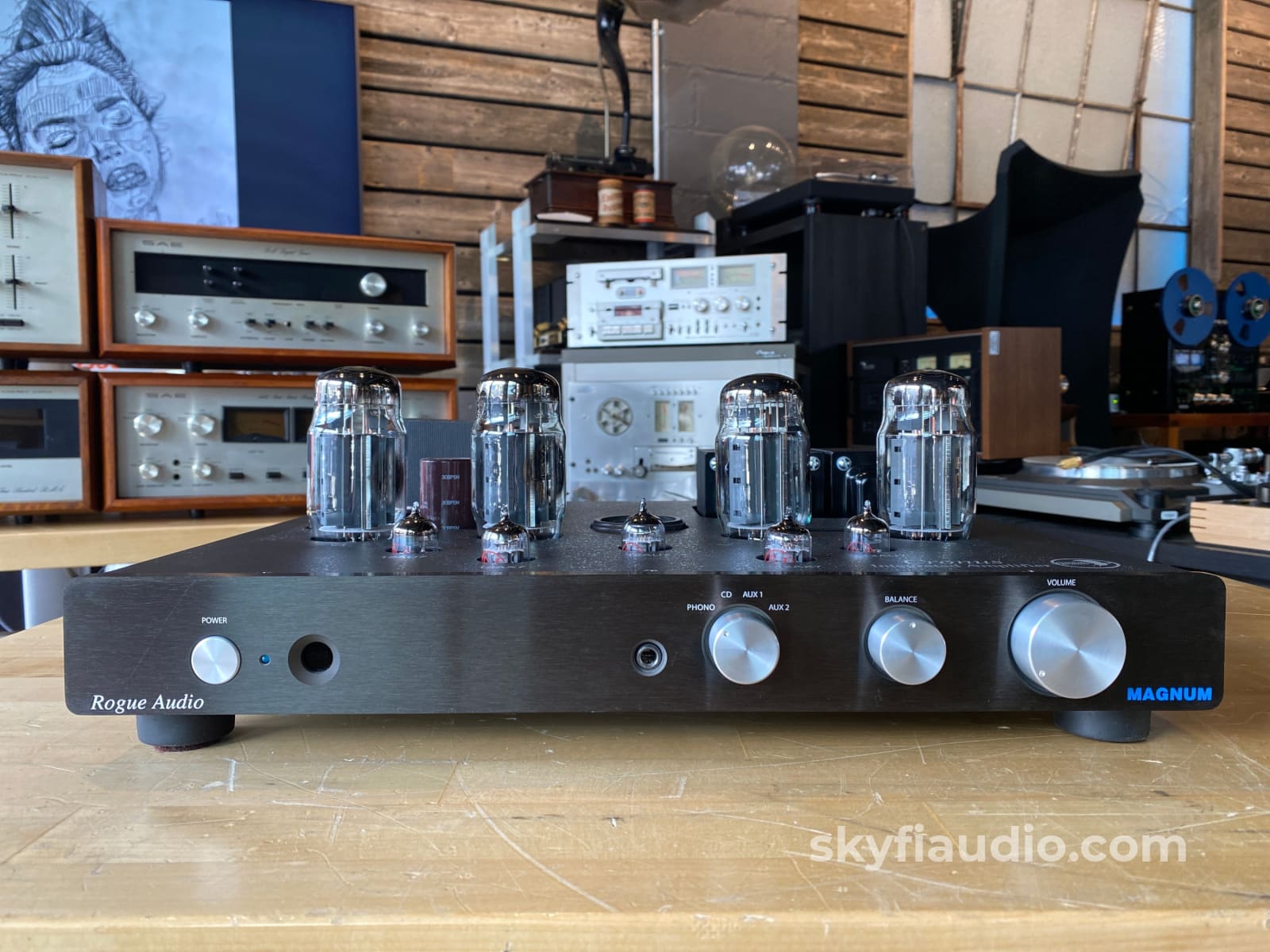
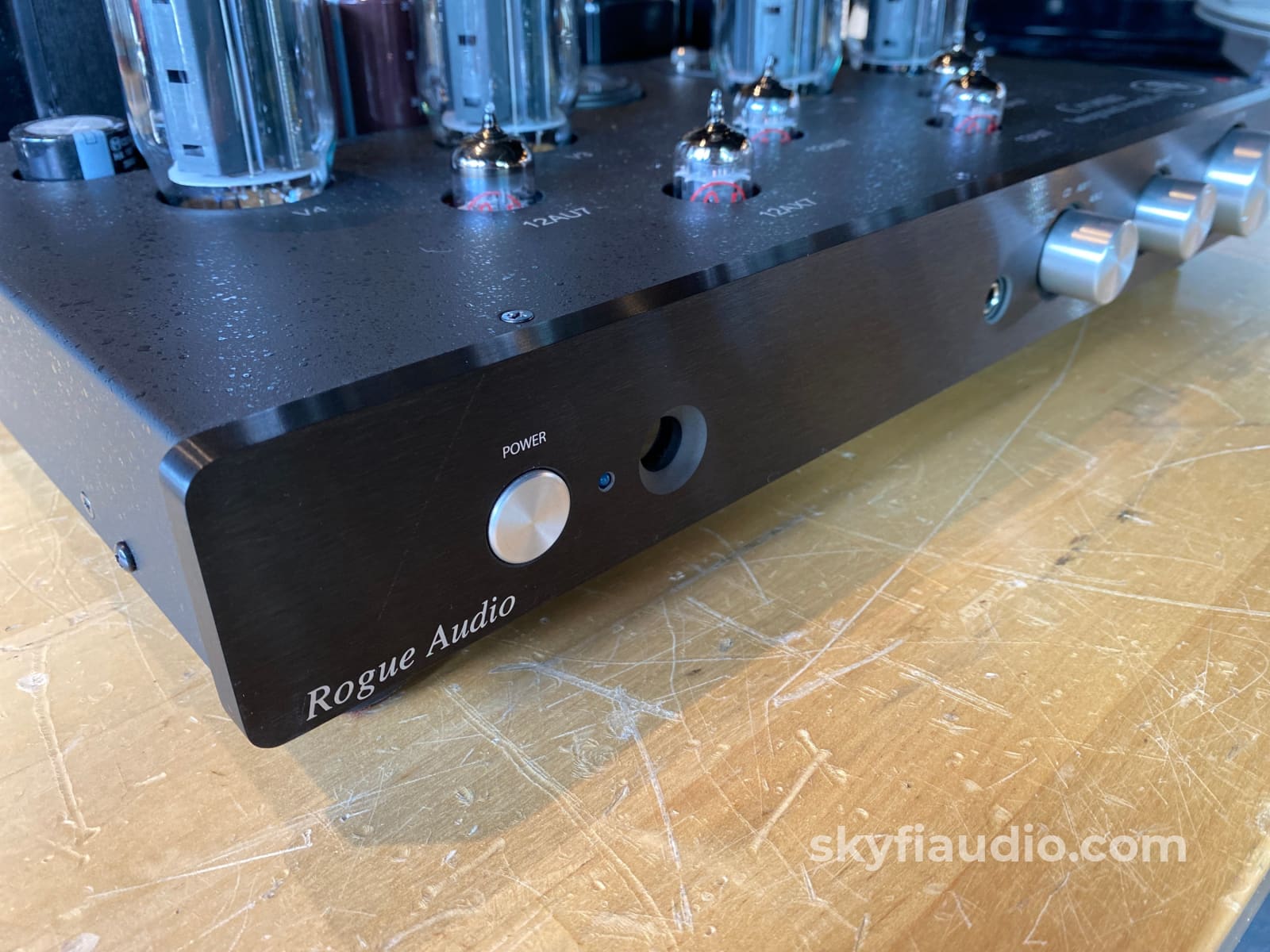
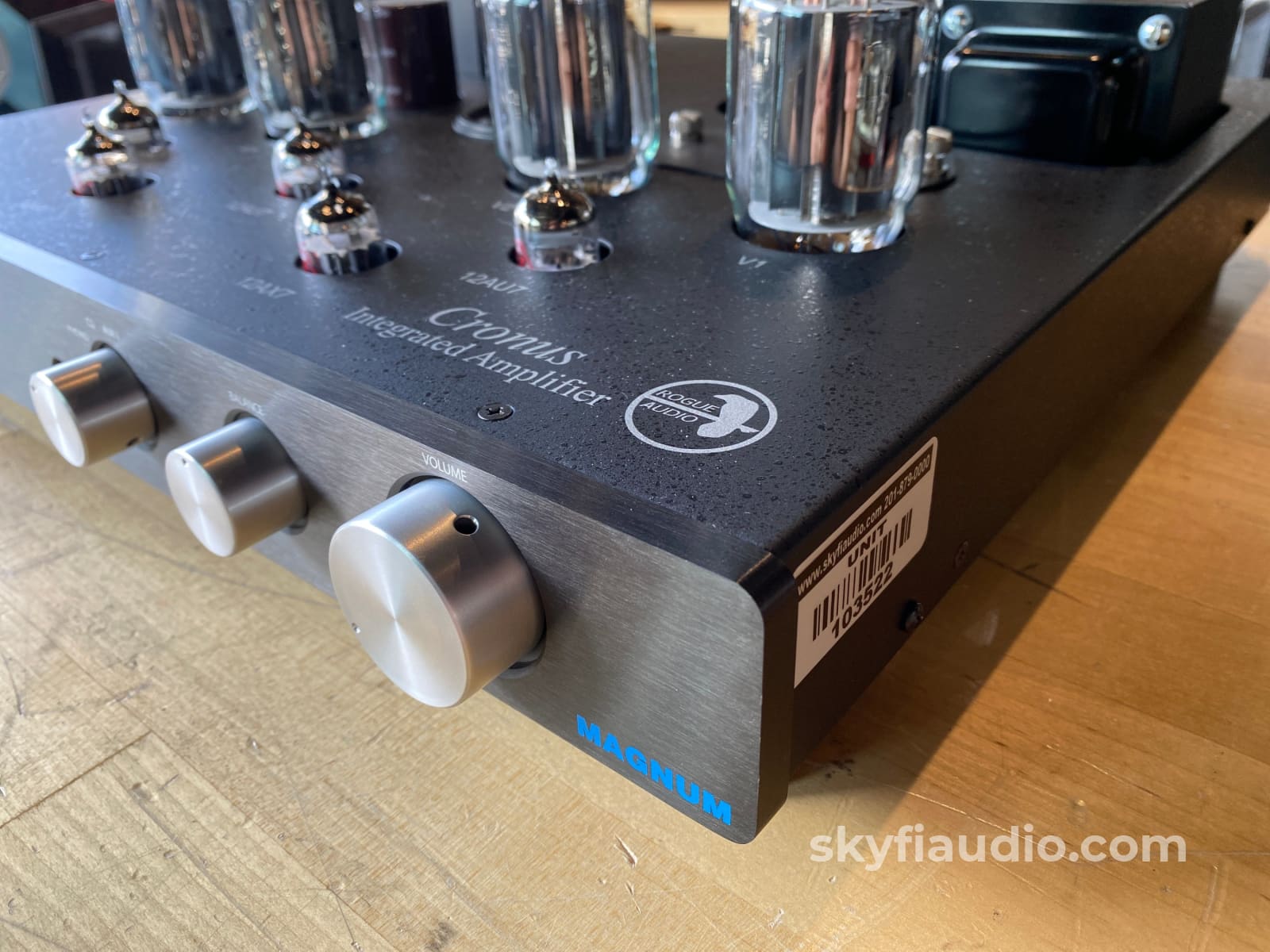
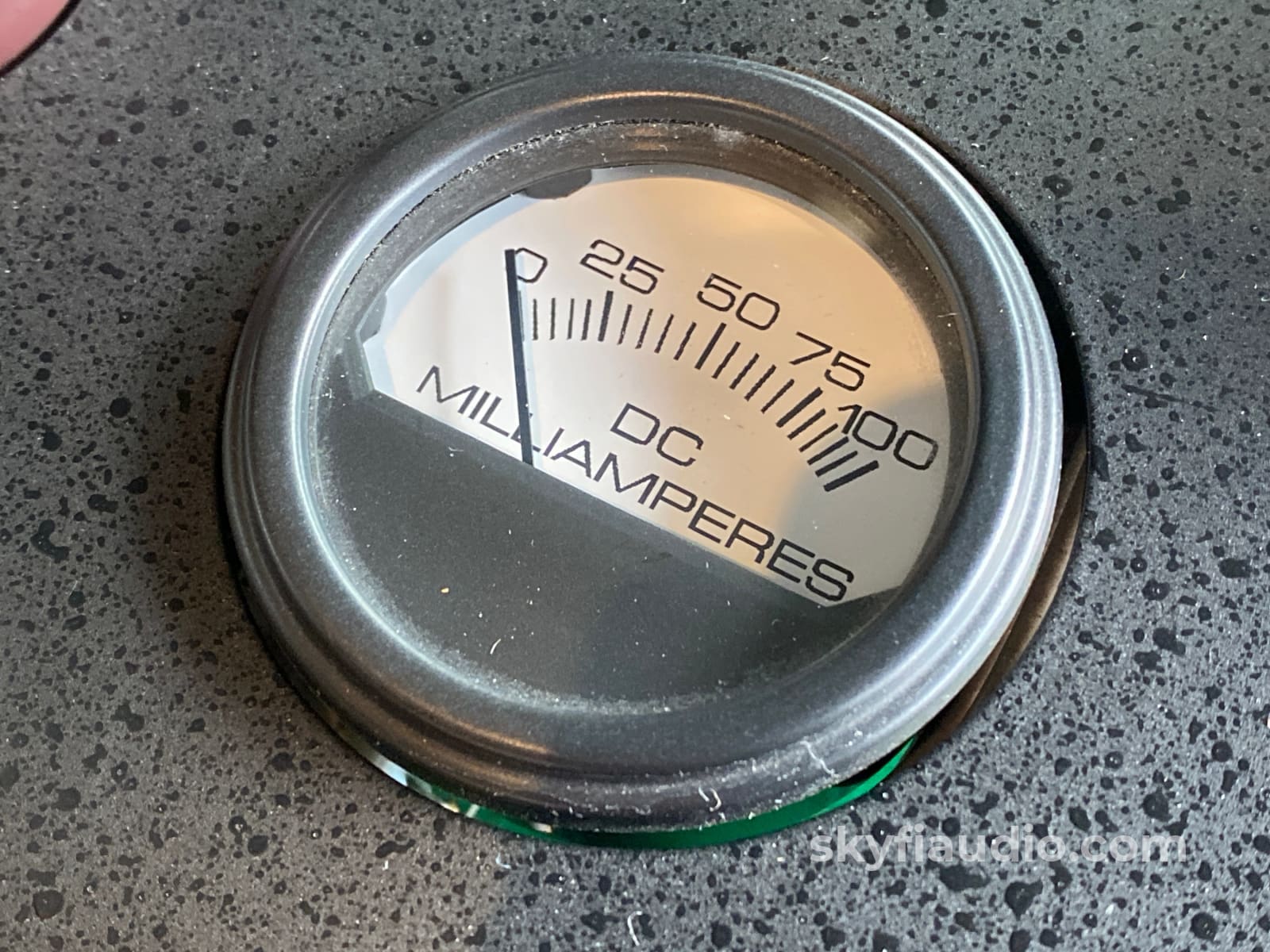
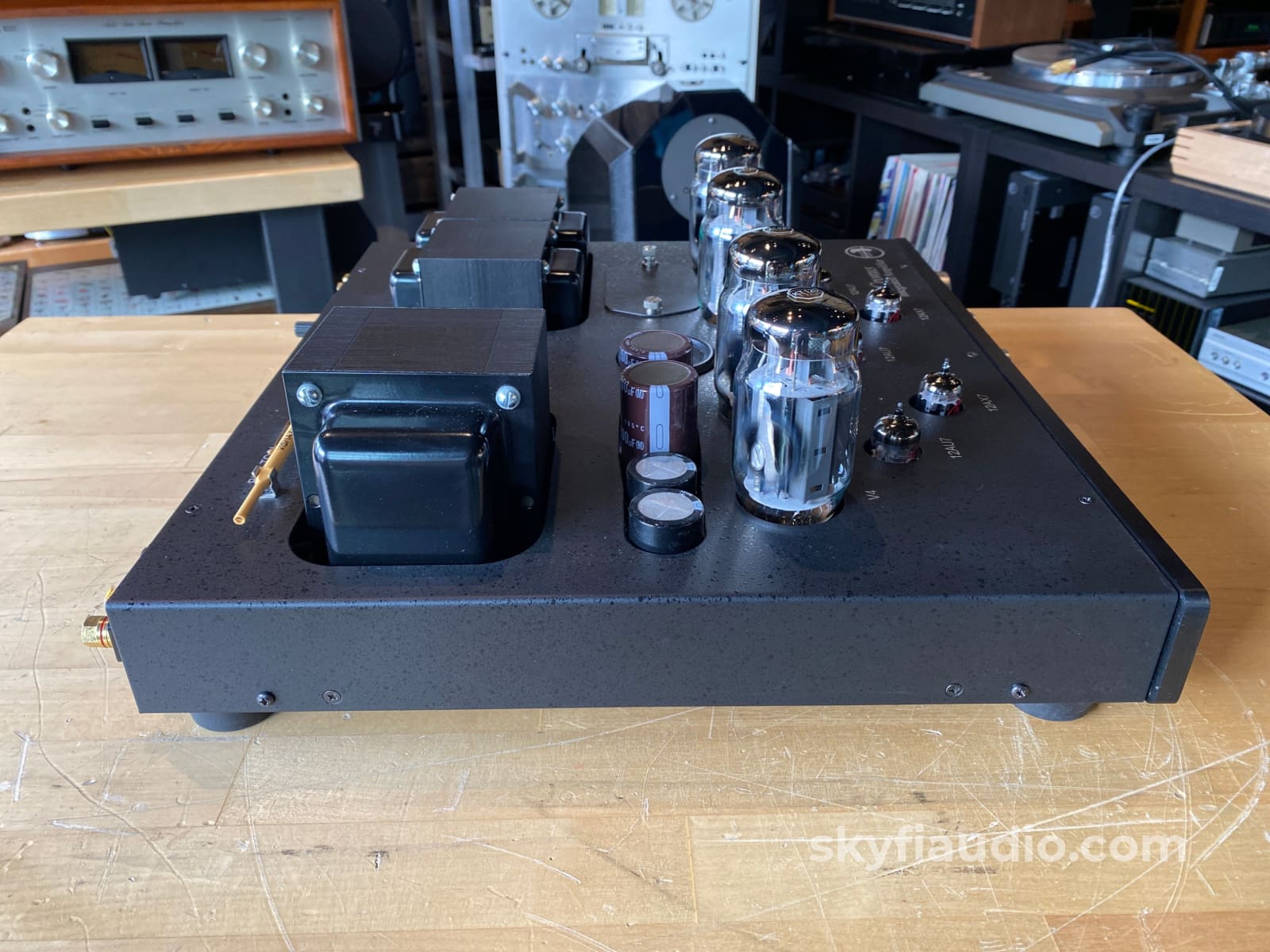
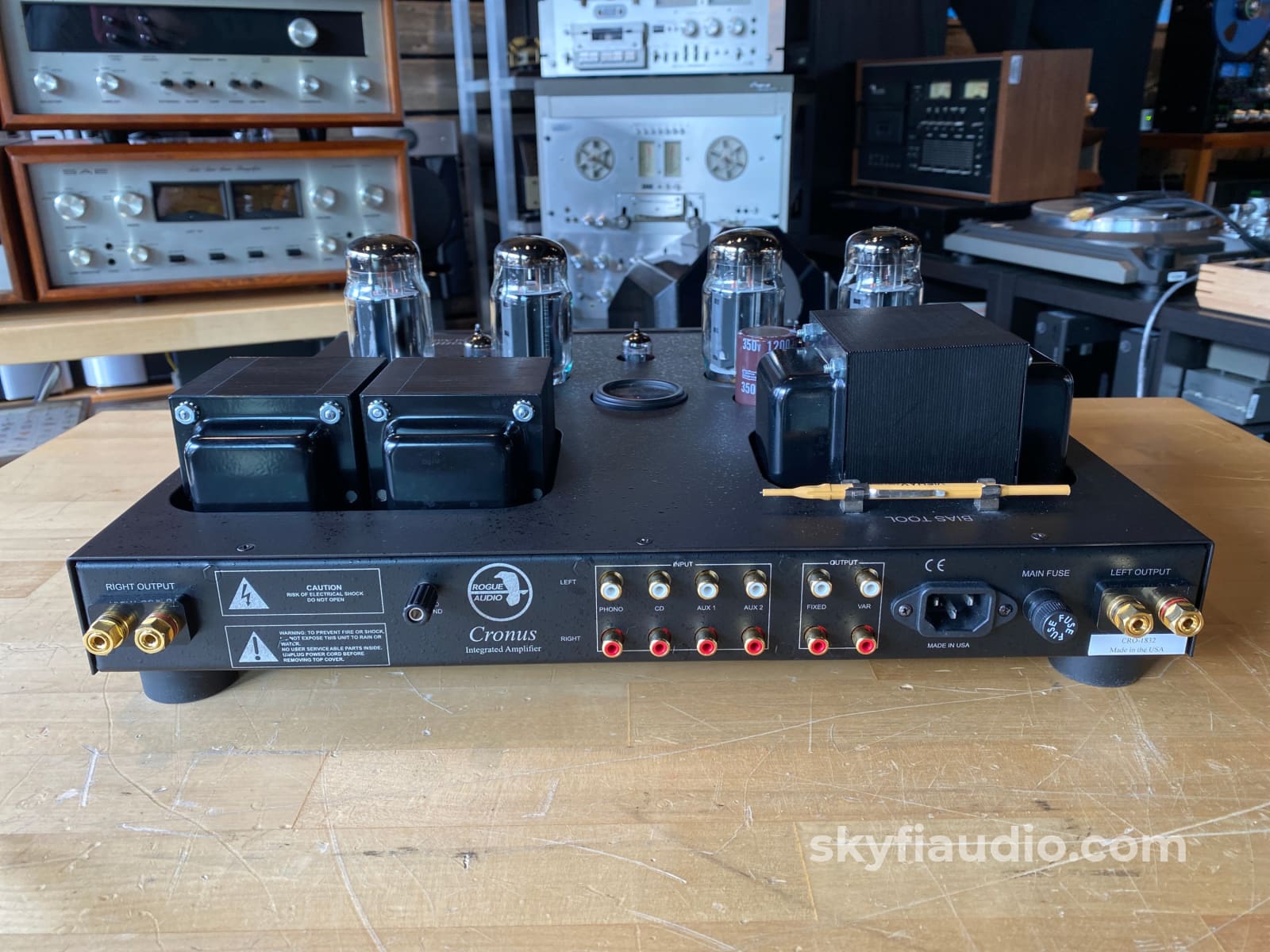
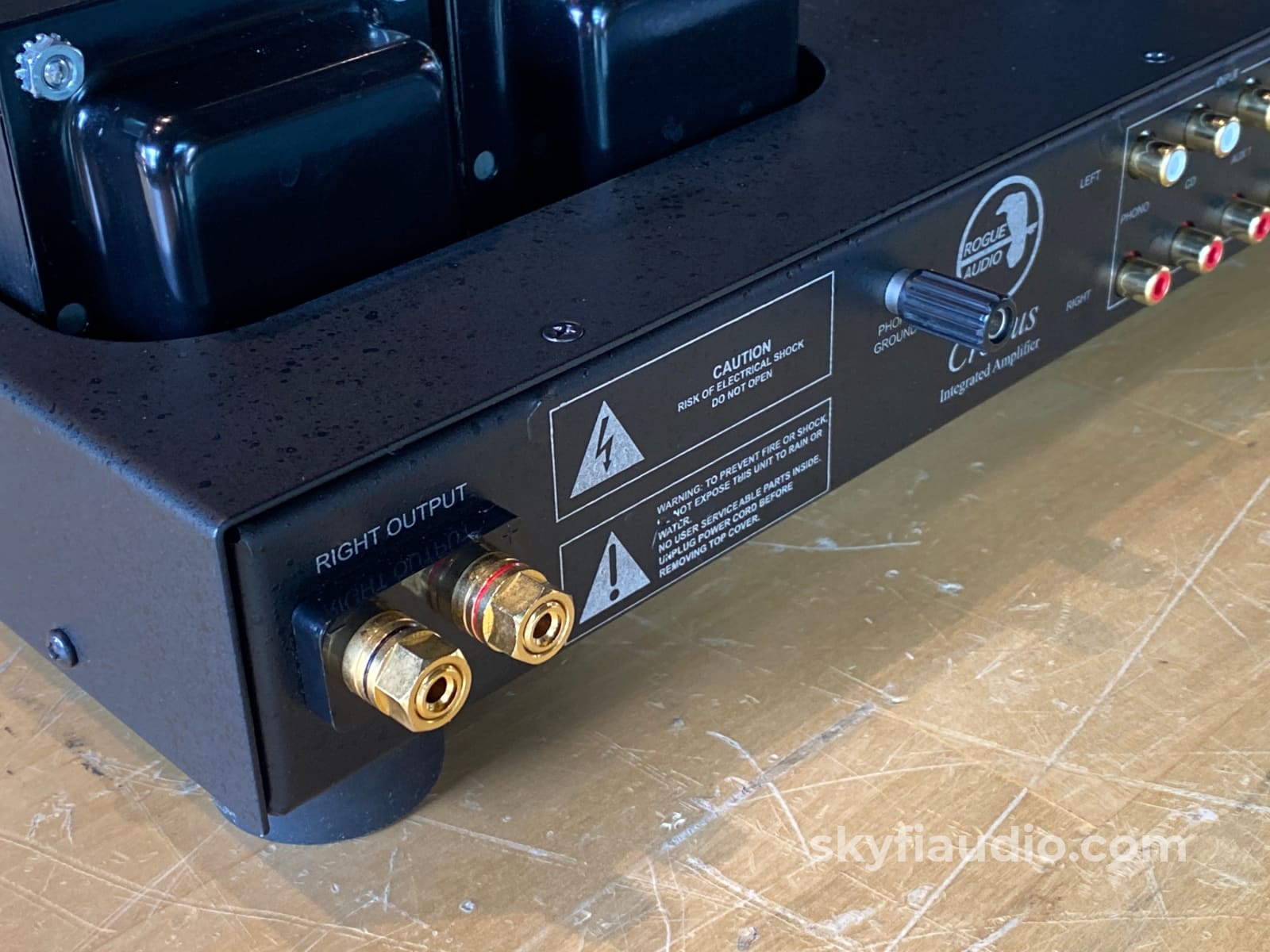
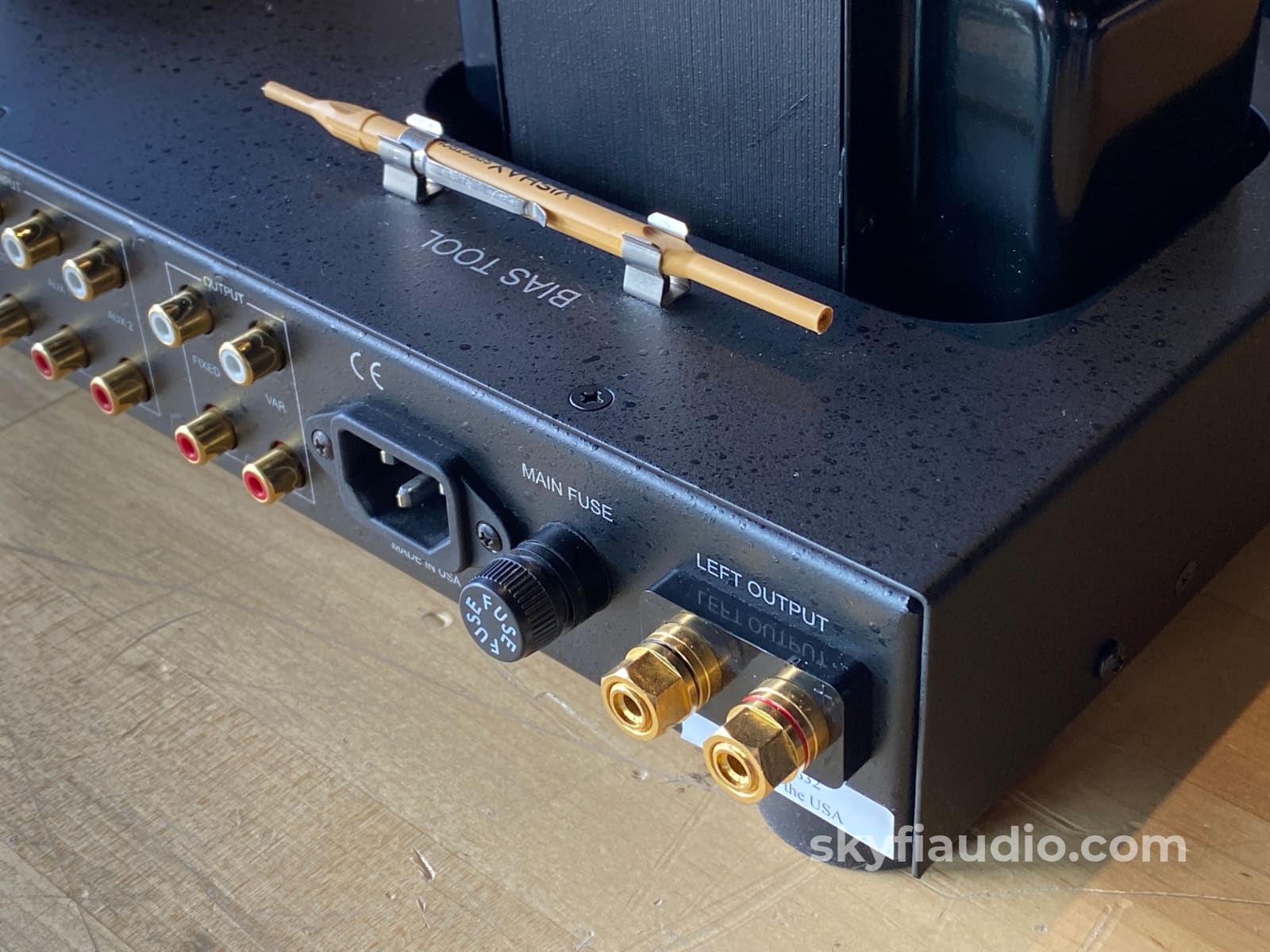
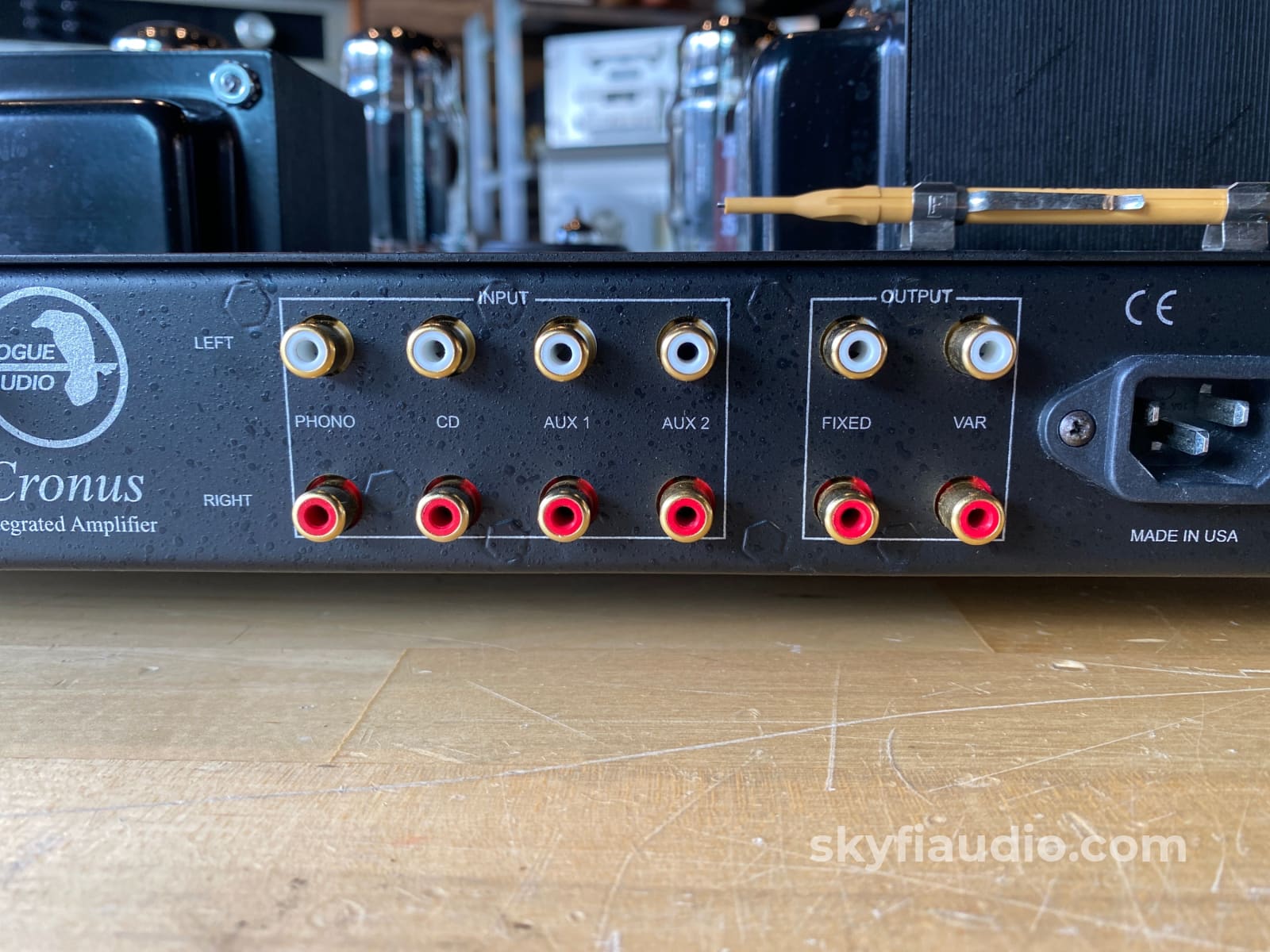
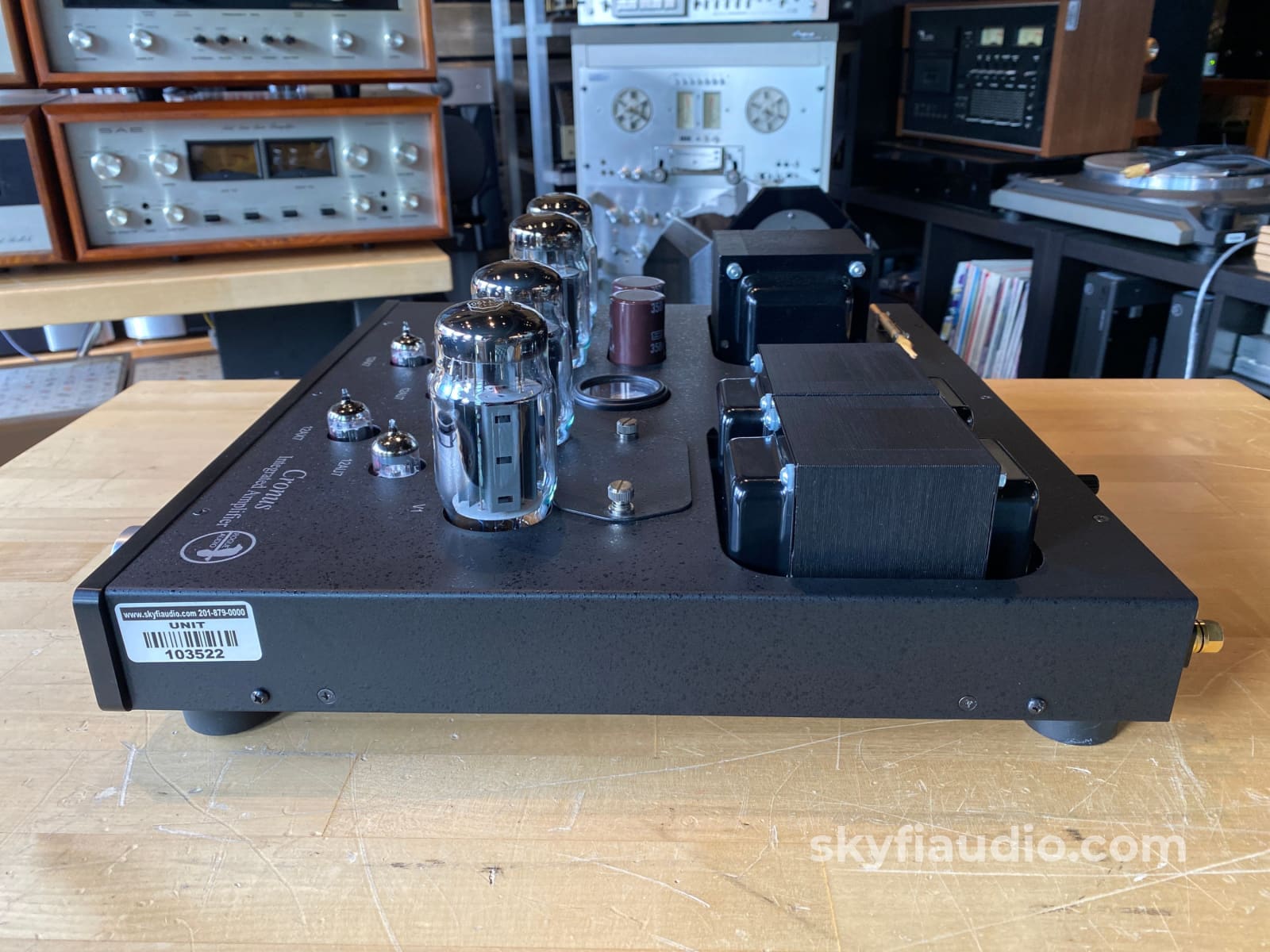
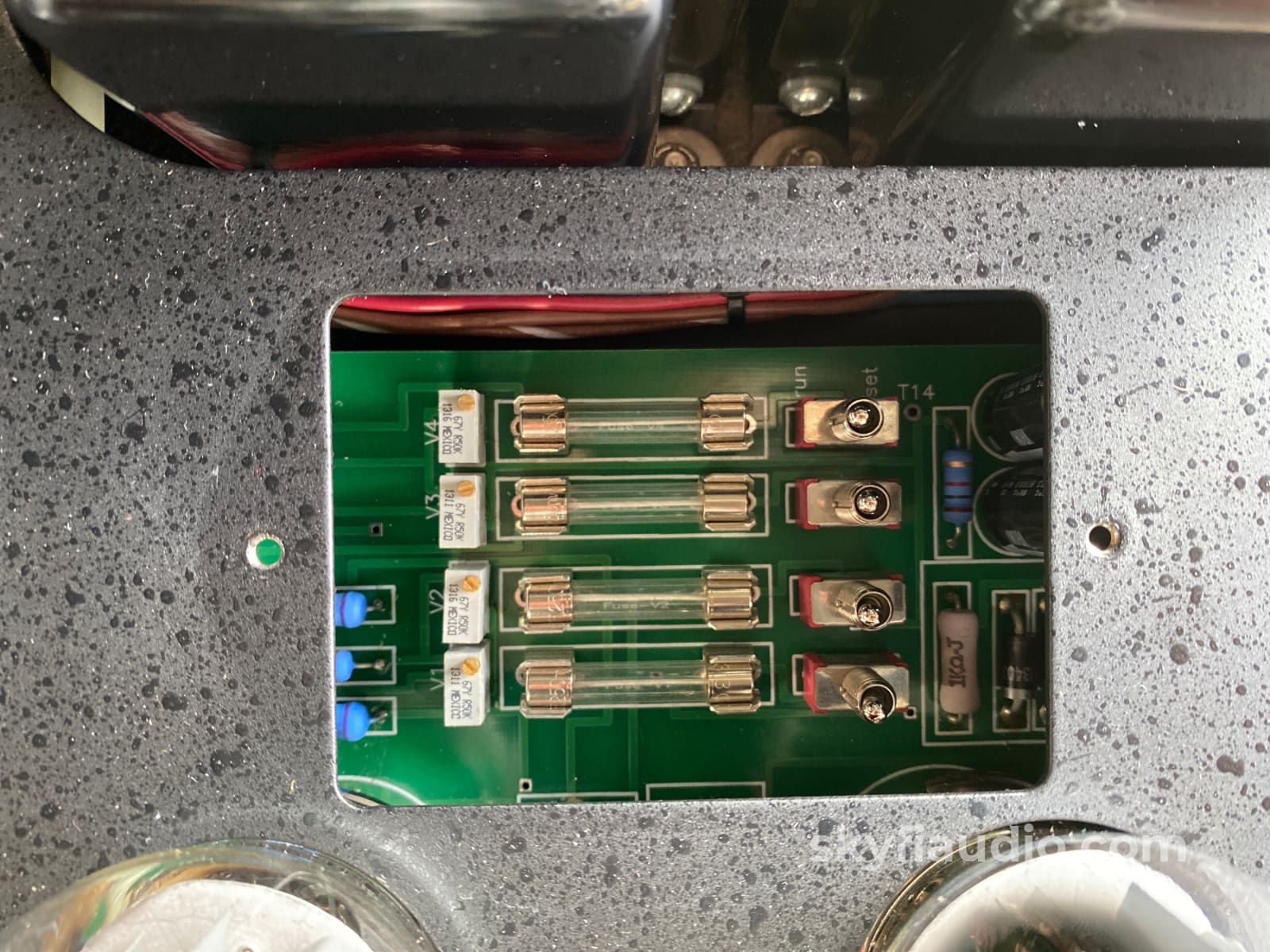
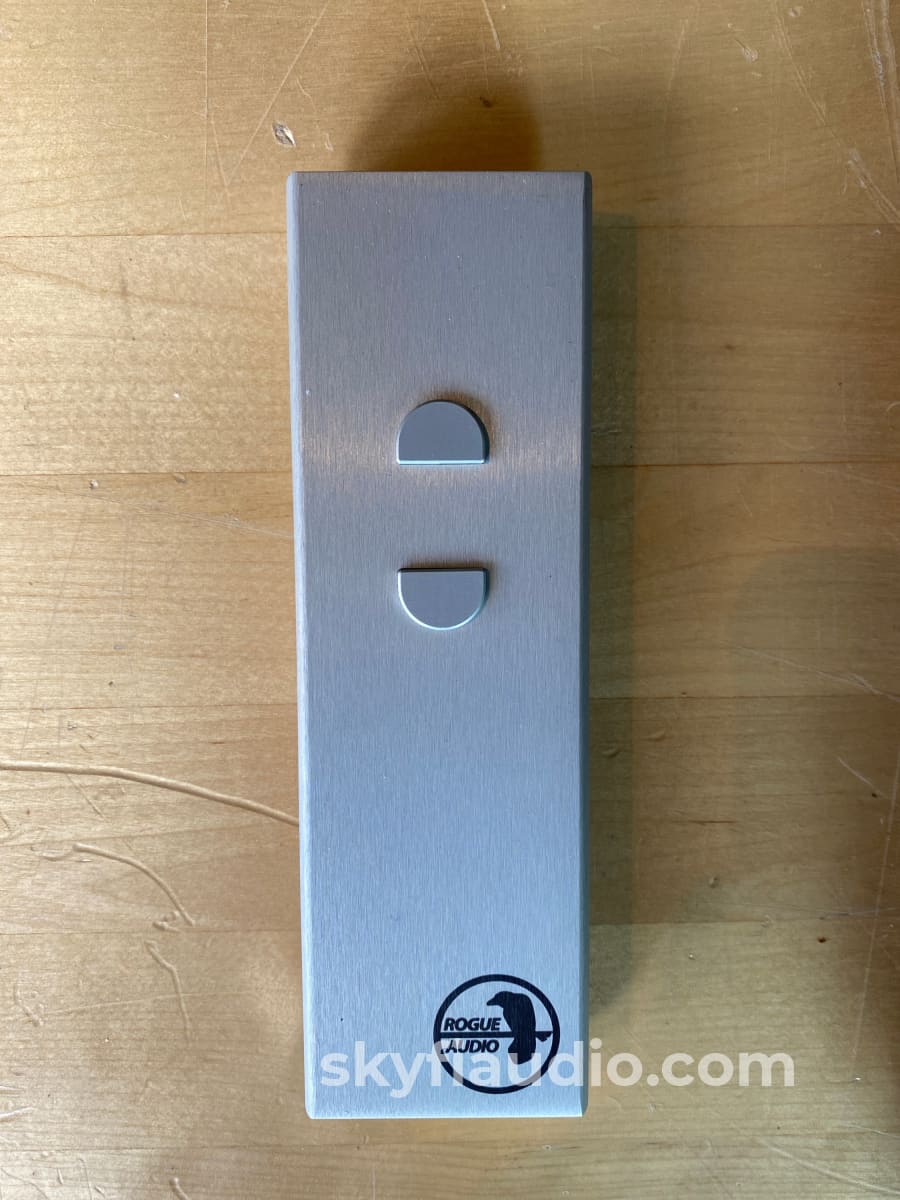
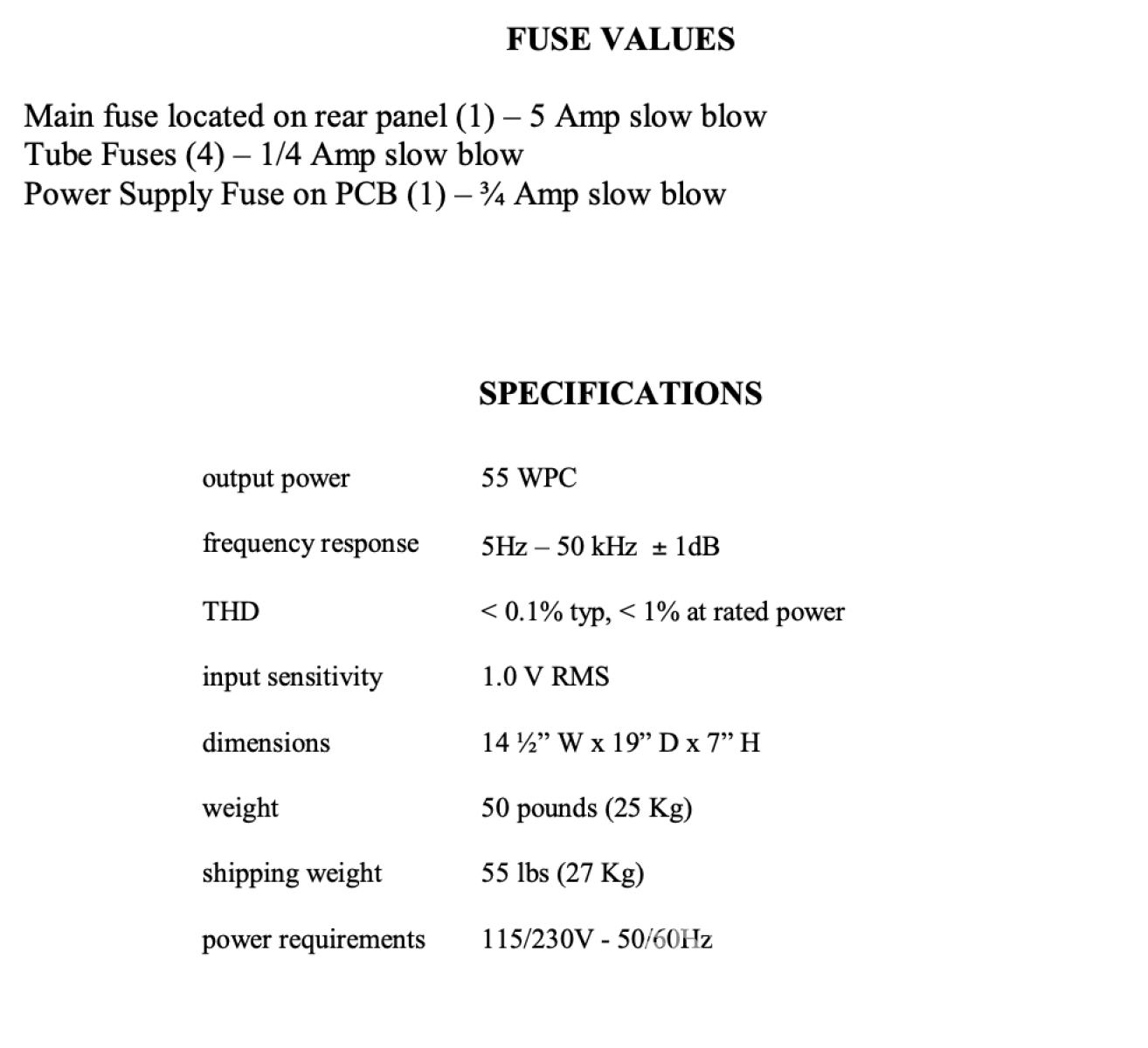
Rogue Audio Cronus Magnum Tube Integrated Amp w/Factory Upgraded KT120 Top Cover + Phono
Free Shipping on Most Electronics - Excludes Speakers and Items Requiring Freight - Contiguous U.S. Only
Pickup currently unavailable at SkyFi 479

Rogue Audio Cronus Magnum Tube Integrated Amp w/Factory Upgraded KT120 Top Cover + Phono
SkyFi 479
479 South Broad Street
Glen Rock NJ 07452
United States
Entirely designed and hand built in the USA, this is the original version of the popular Cronus Magnum tube Integrated capable of connecting a turntable as well as three additional sources.
This is an upgraded example that includes a client requested official factory top cover that accommodates KT120 type tubes.
A remote control is included for ultimate convenience often not available in tube gear. And the front volume control dial is motorized to move in sync with your remote commands as an added touch.
The phono input is optimized for high output cartridges. Meaning MM (Moving-Magnet) and High Output MC (Moving-Coil).
Just biased and putting out a clean 60W per side. Currently installed tubes are Tung-Sol KT120's.
In great working and physical condition with little signs of use.
Rogue Audio Cronus Magnum Tube Integrated Amp - Owner's Manual
Click below to add our recommended matching cables from Kimber Kable, all brand new as SkyFi is an official Kimber dealer.
Ascent Series Hero Analog Interconnects (PAIR) - RCA Ultraplate or WBT Connectors
Kimber Kable - RCA Interconnects
8TC "Ascent Series" Speaker Cables (Pair)
Kimber Kable - Base Series PK14 Power Cord
The SkyFi Testing Process for Tube Amplifiers:
We start with a visual inspection of all internal components to make sure that there are no signs of heat stress or damage. Capacitors are checked for telltale signs of predictive failure including bulging, shrunken wrappers, or physical leakage. We also inspect resistors and other passive components for signs of overheating. If tube arcing has occurred in the past we can usually spot discoloration on the output tube sockets. On vintage units we often spot check select capacitors for value and ESR.
If the amplifier passes visual inspection, we move on to a full test of all of the tubes. We use an Amplitrex AT-1000 Tube Tester which is capable of testing both emission and Gm with a high degree of accuracy. We document the results of each tube and replace any weak or suspect tubes before proceeding. When we power on tube amplifiers for the first time we usually use a variac and current limited AC supply and slowly raise the voltage up to nominal mains level while monitoring plate, screen, filament, and negative bias supply voltages where applicable. If everything is in order we feed a low level test signal into the amplifier’s input and monitor its output on an oscilloscope across an 8 ohm dummy load. At this point we are just looking to verify basic function and confirm that the output transformers are not damaged. Once we have verified that the amplifier is safe to operate, we connected it to full mains power. For fixed bias amps we set the bias to manufacturer spec. For cathode biased amps we monitor the plate to cathode voltage to determine if the output tubes are operating in a safe range. Once the output section is verified we move onto bench evaluation.
We start by feeding the input of the amplifier with a low level 1KHz test signal, slowly increase its amplitude while monitoring the amplifier’s output on an oscilloscope for signs of noise, clipping, distortion, or improper channel balance. We continue increasing the signal level until the amplifier reaches clipping. At this point we take an output power measurement and compare it to the spec sheet of the amplifier to verify proper performance. We finish off the bench evaluation with a 1KHz square wave check and a 20Hz to 20KHz sine sweep to assess the amplifier’s frequency response characteristics. This battery of tests will usually reveal if the amplifier has any issues that need further attention.
Before the device leaves the bench, we perform a listening test with actual music using a variety of preferred test tracks. Our benches are outfitted with familiar monitor speakers which help us identify inconsistencies that will not always show up on our test gear. The main things that we are listening for are hum or noise with no signal present, proper center image, clicks, pops, or any other obvious undesirable audio characteristics.
If the unit passes all of these tests it is moved to our long term testing rig where we simulate real word operating conditions for 6-8 hours. For tube amps we like to run this test at least twice. This allows us to monitor the unit for signs of thermal runaway or intermittent issues that only crop up when it has fully come up to temperature. We find this step to be essential, especially for vintage units.
|
Item |
Included |
|
Original Box |
Not Included |
|
Manual |
Online Only |
|
Remote |
Yes Included |
|
Cables |
Yes - Power Only |
|
Physical Condition |
7 / 10 |
|
Working Condition |
10 / 10 |
Choose options
